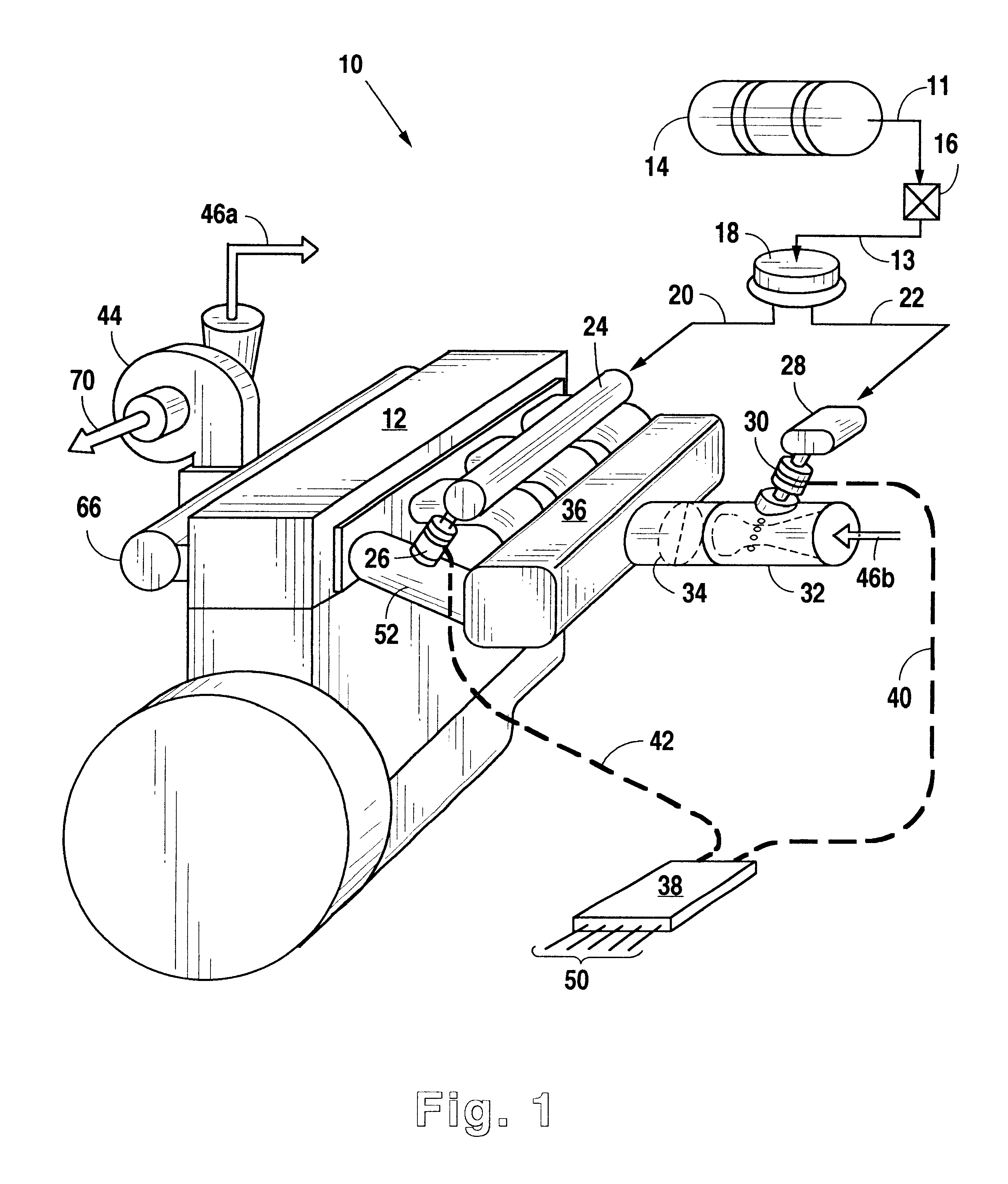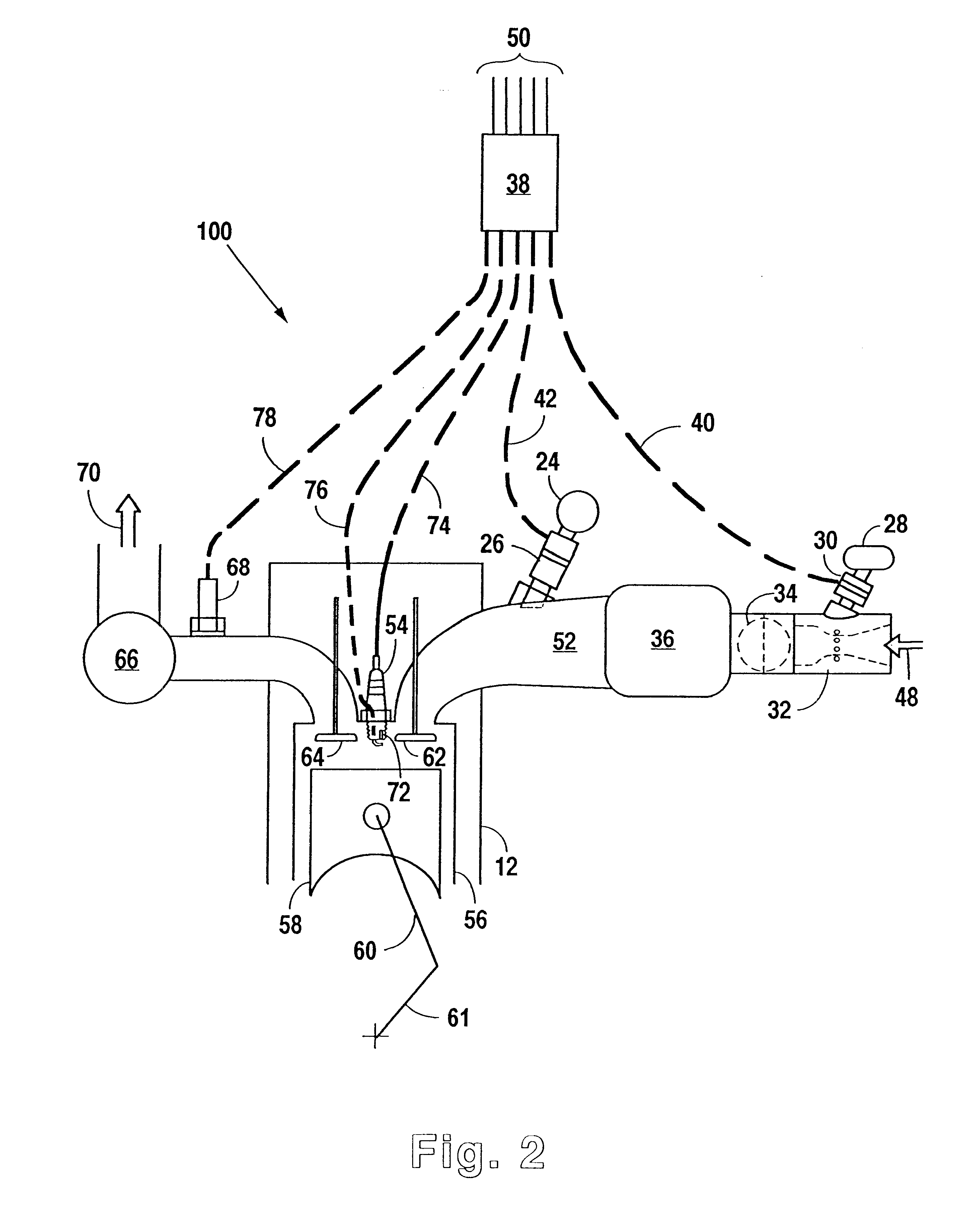Fuel system with dual fuel injectors for internal combustion engines
a fuel system and internal combustion engine technology, applied in the direction of machines/engines, electric control, mechanical equipment, etc., can solve the problems of non-compliance with applicable emissions regulations, difficult production of reliable, efficient, cost-effective, gaseous-fueled heavy-duty engines,
- Summary
- Abstract
- Description
- Claims
- Application Information
AI Technical Summary
Benefits of technology
Problems solved by technology
Method used
Image
Examples
Embodiment Construction
FIG. 1 illustrates a preferred fuel system 10 in accordance with the present invention that is used to supply fuel, preferably gaseous fuel, to a multi-cylinder, turbocharged engine 12. With respect to the fuel in system 10, the term "fluid" is used herein to mean either a liquid or a gas. The fuel supply / storage of system lo may be any of a number of commonly available fuel supply systems, such as stationary gas pipelines, compressed gas cylinders, or liquefied storage tanks. Preferably, fuel system 10 contains a fuel storage cylinder 14 that feeds fuel to the rest of system 10 through a fuel tube or supply line 11, which preferably includes an emergency shut-off valve 16 and may also include a fuel filter (not shown). Downstream of emergency shut-off valve 16, the fuel passes through fuel line 13 to a fuel pressure regulator 18, which regulates the pressure of the fuel according to methods well known in the art. From pressure regulator 18, the fuel is fed through supply lines 20 a...
PUM
 Login to View More
Login to View More Abstract
Description
Claims
Application Information
 Login to View More
Login to View More - R&D
- Intellectual Property
- Life Sciences
- Materials
- Tech Scout
- Unparalleled Data Quality
- Higher Quality Content
- 60% Fewer Hallucinations
Browse by: Latest US Patents, China's latest patents, Technical Efficacy Thesaurus, Application Domain, Technology Topic, Popular Technical Reports.
© 2025 PatSnap. All rights reserved.Legal|Privacy policy|Modern Slavery Act Transparency Statement|Sitemap|About US| Contact US: help@patsnap.com



